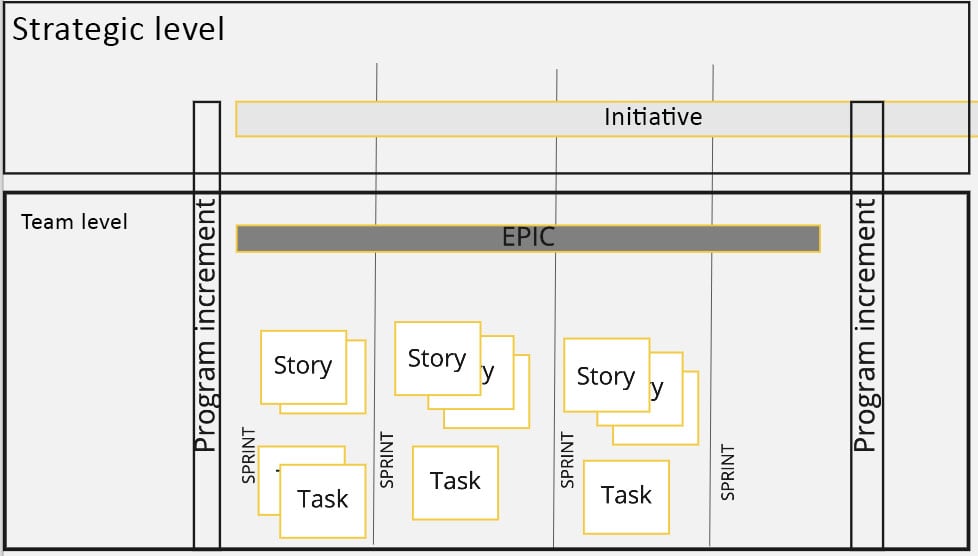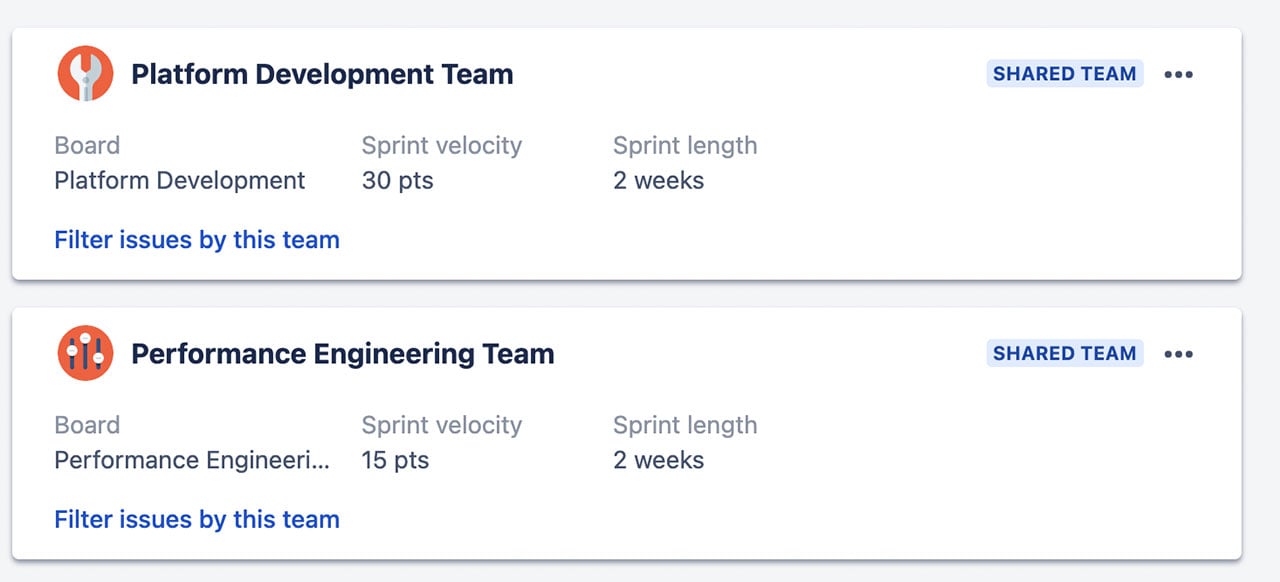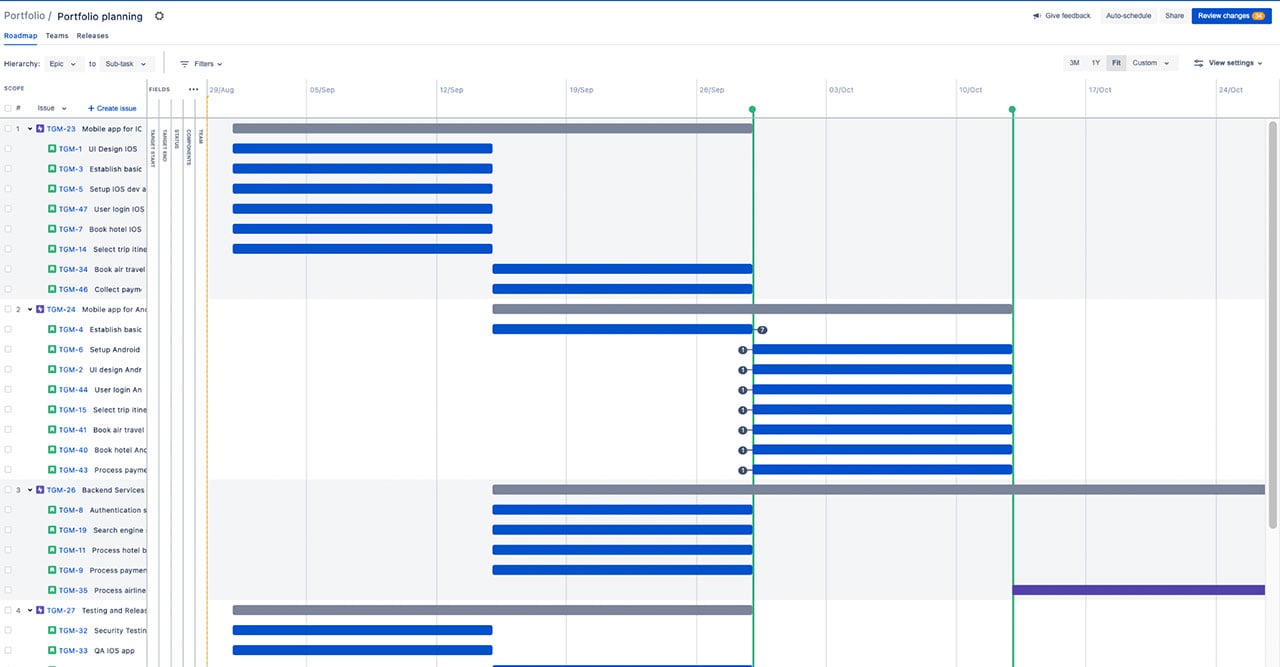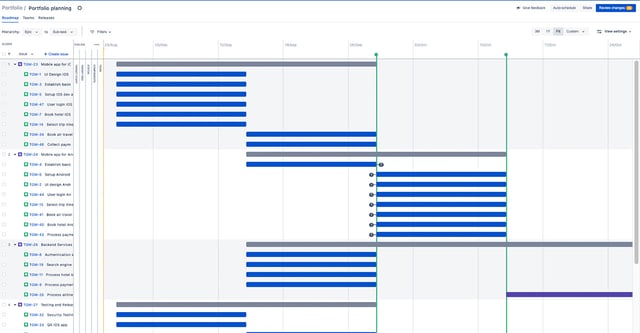In this blog post, you will learn the basics of, and how to get started with, Advanced Roadmaps .
All companies want to improve cooperation and communication for operational reasons. But to do so, you need:
- clear processes
- a team who can put the processes into practice
- (above all) a great support system that makes users’ lives easier
Atlassian’s Jira Software and Confluence offer a range of ways to share information between teams and departments. There are also a number of methods and tools to help teams work more efficiently on projects large and small, as well as providing a clear overview of the work. One particularly popular and user-friendly tool is Jira’s Advanced Roadmaps.
In this blog post, we will be going through the basics of Advanced Roadmaps and the features and benefits it offers.
A tool for anyone who wants a good overview
Advanced Roadmaps is a planning tool that makes use of real-time information from Jira Software. It is all about transparency, providing heightened understanding of the current situation and future planning, both for those in charge and team members.
Project managers, team members, scrum masters and those in SAFe roles (such as product owners and release train engineers) gain an overview and understanding of both the current situation, and future activities and their statuses.
(The Advanced Roadmaps application is included in DC licenses (as of version 8.15) and Cloud plans at Premium level and above.)
Agile planning and visualization
The future can be hard to predict, which is where Advanced Roadmaps can help you with one of the foundations of the agile manifesto: ‘Responding to change over following a plan’. With Advanced Roadmaps, you can plan for the future by breaking projects and initiatives down into smaller tasks and visualizing them using a Gantt chart.
The parts and features of Advanced Roadmaps
Clarify goals – bring together the strategy and the team
Advanced Roadmaps truly comes into its own when used to bring together long-term strategic planning with the team’s work in Jira.
In your organization, there is likely a strategic level with a longer-term perspective in terms of product initiatives and goals. With Advanced Roadmaps, you can put these initiatives and goals into Jira as their own task type, in their own Kanban board. This helps users analyze, prioritize and plan implementations.
You can then create a plan in which you bring together the strategic level and your team’s boards at epic, story and task level. This will then help you see the status of the team’s work, aggregated into initiatives and objectives. The team, accordingly, can see the objective of each individual task and story.

The illustration visualises an example plan for an initiative, broken down into epic, story and task levels. These are scheduled as one increment and four sprints.
Create a strategic task type
In this blog post, we have opted to call the new task type ‘Initiative’, but can be named based on your company’s own nomenclature, such as Product X or Portfolio Y.
When you create a new strategic task type, it helps to think through the following:
- Name: What should this new task type be called?
- Purpose and use: What roles does the task type create, own and prioritize?
- Size: What is the extent of your new task type in terms of calendar time or estimated time – story points, weeks, months, start and end date?
- Workflow: What does the task type’s workflow look like? Will it require new statuses, for example?
- Visualization: Will you need new fields for filtering, prioritization or follow-up, for example?
Determine access – share information with the right people
Different information has different sharing needs – all parties involved, several groups, or particular individuals. Each plan can be private or global.
- Private plans: the owner can choose who can see and make changes to the plan.
- Global plans: are automatically accessible to all those using Advanced Roadmaps, allowing everyone to view and edit the plan.
Prioritize and plan – with ranking and team features
Ranking
Using the ranking feature is one way of prioritizing tasks identified from the backlog in Jira. Dragging and dropping tasks in your Advanced Roadmap plan changes the prioritization, which is also reflected in the projects’ backlogs.
Team capacity
Advanced Roadmaps has gained a new entity – team – which is intended to support the agile working practice of scrum. The different teams’ sprint lengths and story points per sprint here are given for each sprint. Thanks to this feature, the team’s capacity can be visualized, and due to the association between team and user, the whole team’s capacity can be adjusted based on leave and holidays.
 Examples of two different teams. The boards they use, story points and sprint lengths.
Examples of two different teams. The boards they use, story points and sprint lengths.
Visualize – twist and turn the data
One of the key strengths of Advanced Roadmaps is the ability to use information in a multitude of ways and simultaneously test different scenarios. This is done using the Gantt chart, ranking, grouping, views, filter and scenario features, which are explored below.
Gantt chart
The Gantt chart in Advanced Roadmaps shows the current timeline of the tasks, their dependencies, and up-coming releases. You can configure the Gantt chart however you wish, based on your approach and planning process. Amongst other things, you can visualize and choose colors based on:
- start and end date
- person responsible
- project
- status
- team capacity
...and more

Grouping
Grouping is another way of looking at the information in your plan. For example, you can group based on component, team and releases. Grouping based on team provides an overview of the team’s workload over their up-coming sprints, if you work on a scrum basis.
Filter
Another way of adapting data is using the filter feature. This allows you to see the plan from different perspectives and take a deep dive into the needs for a specific release, component or dependency.
Show, update and aggregate fields
It is easy to choose which fields you want to view for a task in a table to get a good overview. In this view, you can also carry out mass-updates to fields, using the bulk actions feature. Fields such as story point and date can also be aggregated from underlying stories and epics, which provides an image of the total story points of your initiatives.
Scenarios
Another feature that can be used for planning is scenarios. Scenarios creates a copy of your plan, in which you can test out different potential scenarios. For example, what would happen if one of the teams were removed, how would the release date be affected if you prioritized a small, but customer-critical initiative that you had not taken into account. If a decision is taken based on a scenario, it is possible to replace the plan with the scenario selected and continue work based on the new conditions.
Getting started with Advanced Roadmaps
First and foremost, it can be a good idea to think about what you want to achieve with your Advanced Roadmaps plan. If you want to get started on work right away, these questions can provide a good basis:
- What information do you have available?
- What is the best way to structure the information?
- What needs to be planned?
- What does the team look like? Who should be responsible for what?
- What will the permissions and accesses look like? Who needs to see what?
- Whom should we visualize the work for?
Final words: some advice for the road
Start small and work together to form a sustainable structure.
Try to get the organization on board from early on, and demonstrate the benefits the tool’s transparency offers. Advanced Roadmaps is visually effective for both team members and the rest of the organization.
Apply an agile working practice. Think through your purposes and objectives when it comes to what you want to achieve with the tool. Use, analyze and improve – expand your usage gradually and settle the whole team into the tool.
Published: Sep 13, 2021


